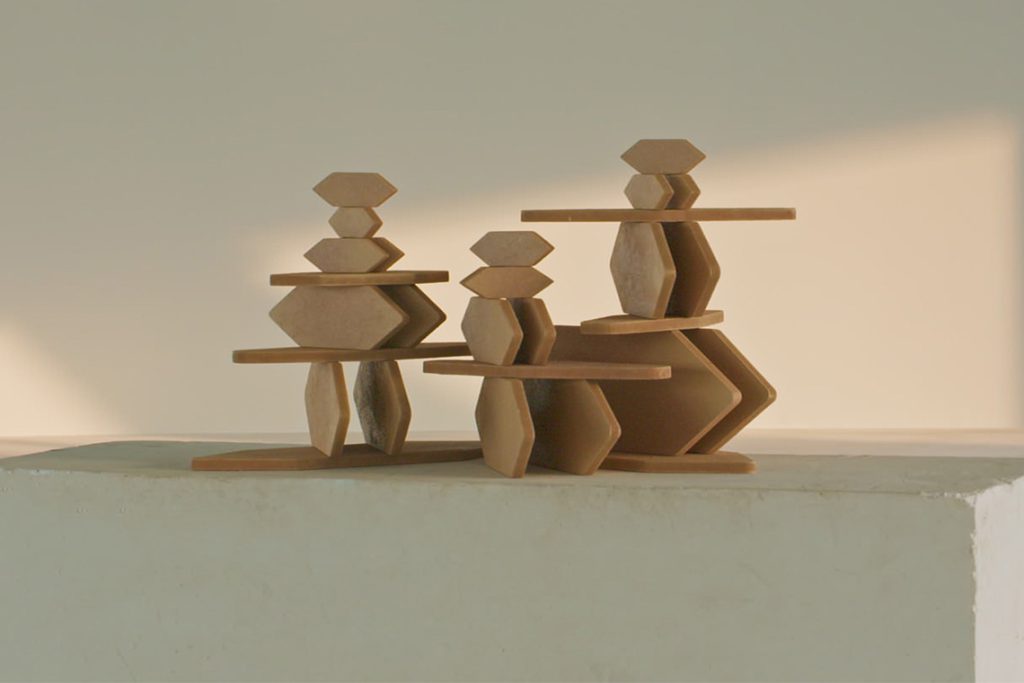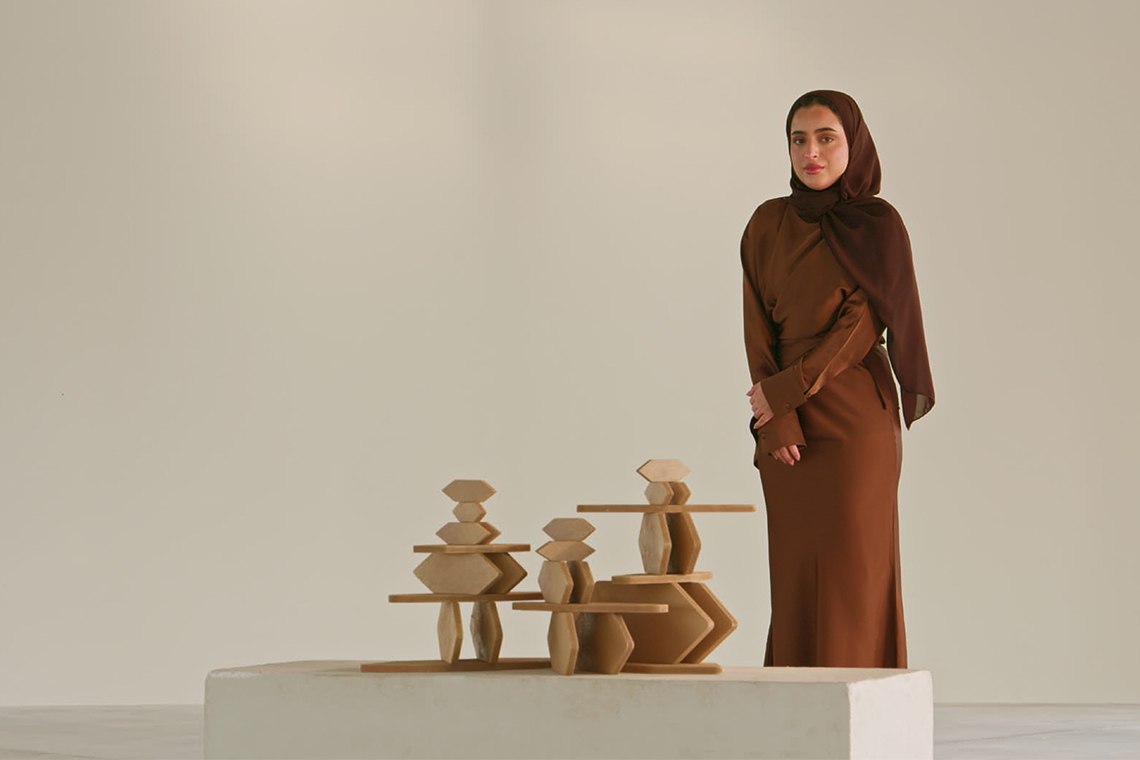The artist speaks with us about her inspiration behind Desert Rose, her recent partnership with Bvlgari for Ramadan.
Canvas: Can you describe the work you created for the Ramadan collaboration with Bvlgari?
Maryam Altajer: The piece is different from my usual work. I come from a graphic design background and also have a masters in design, so this is something I’d normally create for an educational or conceptual project. However, when Bvlgari approached me, I saw it as a challenge. I wanted to step outside my comfort zone and create something functional that helps people slow down and reflect, which ties in beautifully with the spirit of Ramadan.
The work consists of around more than 20 wooden pieces that stack on top of each other. I intentionally made the pieces thin, so that assembling them becomes an almost meditative experience. Each person will create a unique configuration, depending on how they approach it.
What inspired the form of the piece?
The shape is inspired by one of Bvlgari’s signature design motifs. I didn’t want to create a drawing or a literal representation, so instead I drew from another side of myself, my designer personality, and used 3D modelling. I was particularly inspired by the desert rose, a natural crystal formation. It takes a long time to form, piece by piece, unlike a typical flower that blooms all at once. That became the foundation of the concept, to build something gradually, which can also be understood as the experience that one goes through and which impacts the formation of identity or inner growth.
What were your initial thoughts when Bvlgari reached out to you?
It felt too good to be true! But once I understood the campaign’s concept, I realised how my work could align with it perfectly. The themes of rebirth, reflection and resilience resonated with me.
Self-reflection seems to be a key element in your work?
Absolutely. My work is rooted in exploring the inner self. Growing up in this region, there wasn’t much awareness around the importance of emotional introspection. Vulnerability is often seen as a weakness, so my art became a space where I could process, slow down and be fully present.

At the Fire Station residency in Doha, you explored writing Arabic calligraphy in unconventional ways. How did that develop?
That project started out of frustration because graphic design made me hyper-focused on detail. Even just choosing a typeface could take me hours. I wanted to break free from that perfectionism. So I began drawing calligraphy in unpredictable ways, such as writing along jagged lines or playing with texture and composition. It became a form of rebellion, but also a deeper reflection on how we present ourselves. No one really sees our inner world, and my abstract calligraphy plays with that idea. People often can’t read the words, but they find their own meaning in it.
You’ve moved from colourful work to more monochrome pieces. What influenced this change?
When I started, my graphic design background made me very colour-focused. I spent so much time trying to find perfect colour combinations, but it didn’t feel authentic. I realised that black and white express the emotional depth of my work better, because sometimes feelings are just black or white with no in-between.
Do you think you’ll continue working in a 3D, functional direction?
Definitely. I actually launched a functional art line in 2019 and it grew quickly. I was selling in places like Qatar Museums and Harvey Nichols. I paused this year to focus on my MFA thesis, but I see pieces like Desert Rose fitting into that side of my practice.



